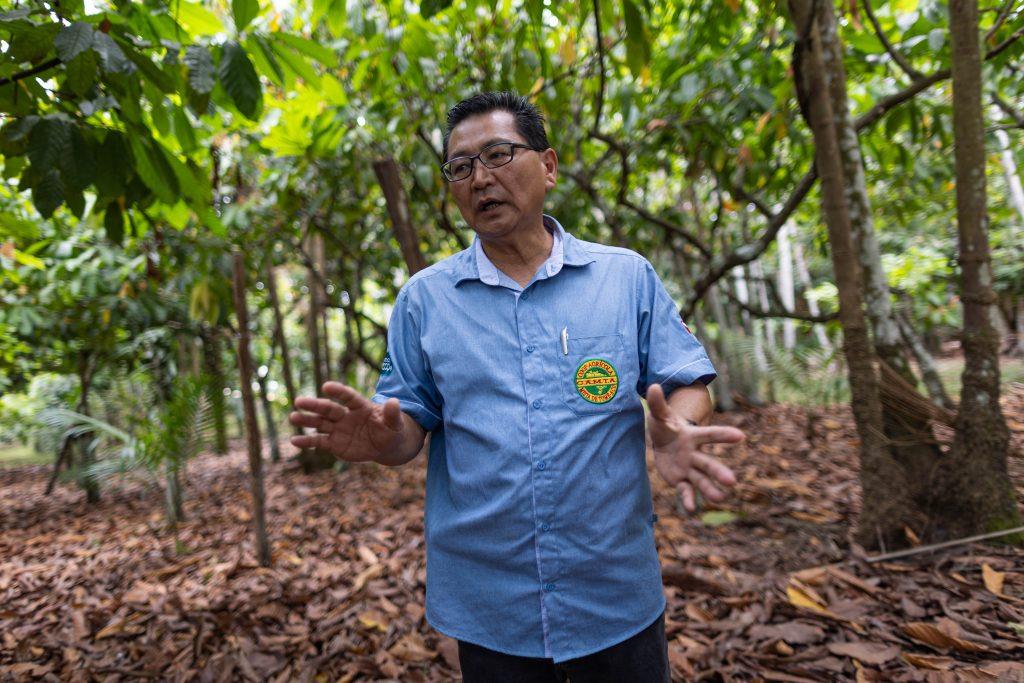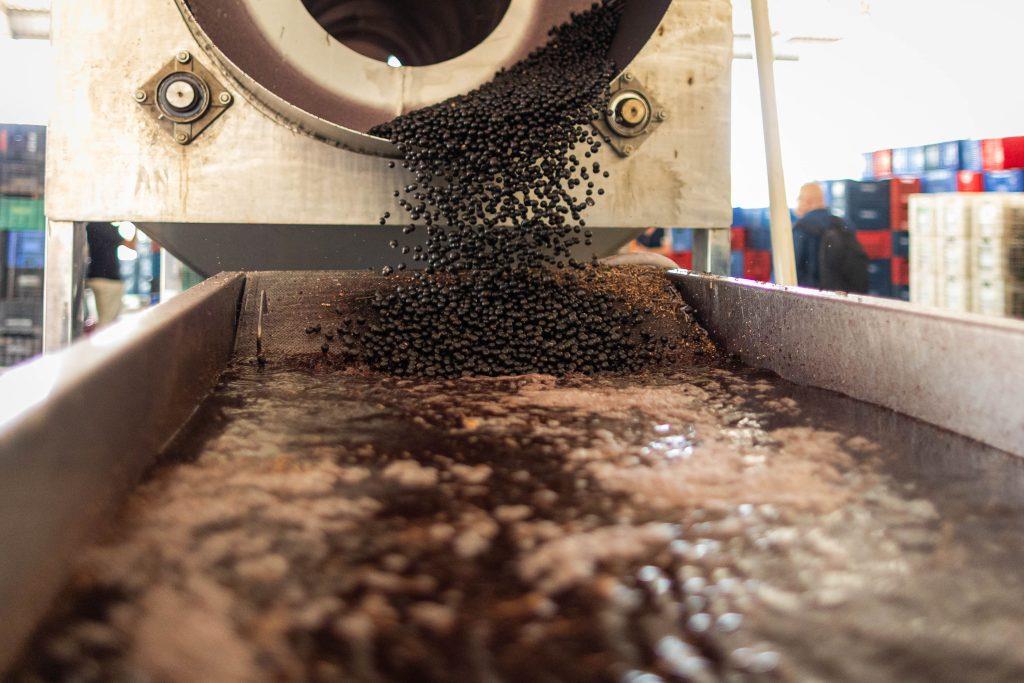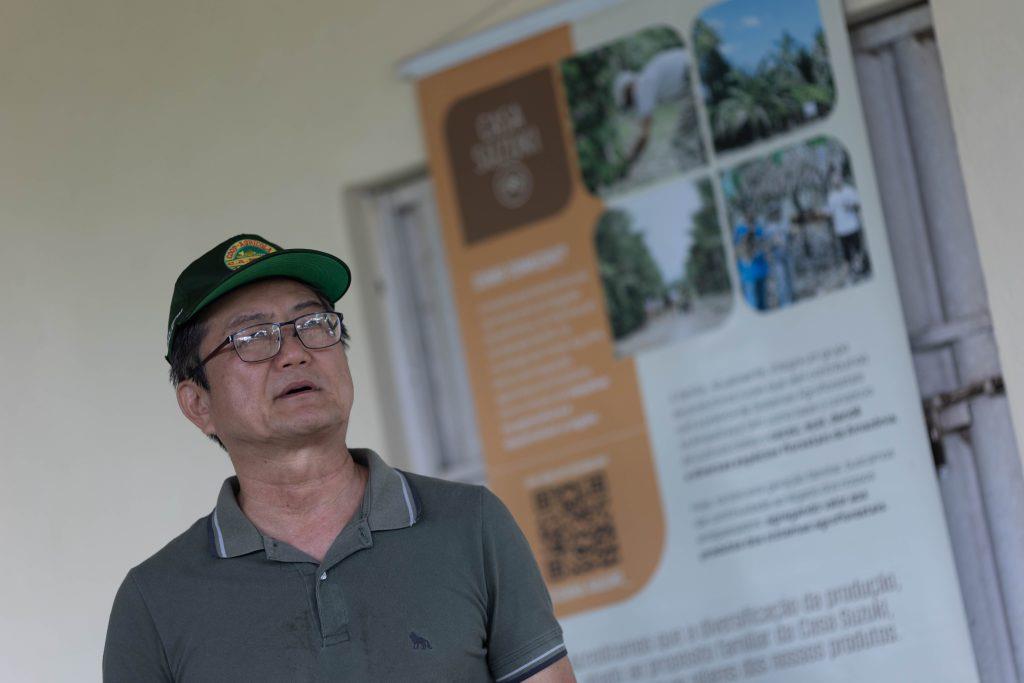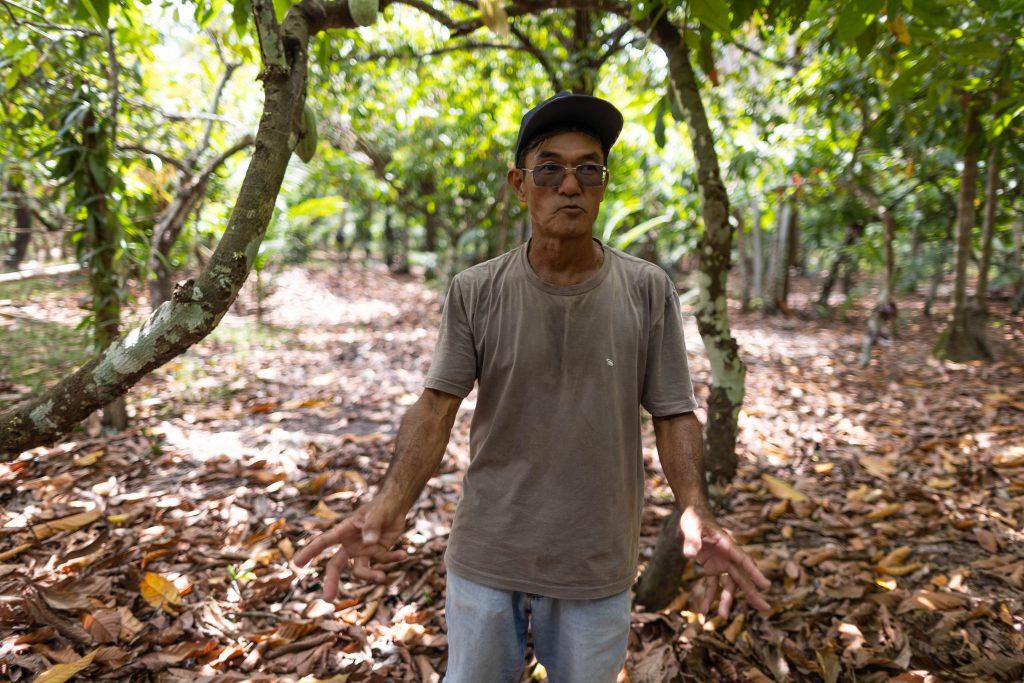
The Agroforests Of Tomé-Açu
One of the main promoters of the idea in the region was the Tomé-Açu Mixed Agricultural Cooperative (CAMTA ), founded in the 1930s under a different name by Japanese immigrants who came to Brazil aiming to grow cocoa. After experimenting with various crops and facing diseases in some of them, CAMTA's members now maintain agroforestry systems (AFS) across seven thousand hectares, out of a total area of 45 thousand hectares.

Of Japanese descent, Alberto Oppata is the president of CAMTA
CAMTA has 170 member farmers, 10% of whom are Japanese and 50% of Japanese descent. According to the cooperative's president, Alberto Oppata, CAMTA directly and indirectly impacts around 10,000 people in the region. The farmers' production includes açaí, cocoa, cupuaçu, murumuru, passion fruit, andiroba, black pepper, palm oil, totaling 15 different products.
When the cooperative first began combining crops in the same area with forest species, it was called a consortium system.“In the 1990s, it changed to the AFS,” explains Oppata. The local practice added a reference to the municipality: Tomé-Açu Agroforestry System, or SAFTA in Portuguese acronym. When palm oil is included, CAMTA calls the model SAF Dendê.

Açaí is processed by the Tomé-Açu cooperative
Oppata explains that the cooperative's agroforestry system is guided by a threefold approach: economic, social, and environmental.“The main goal is to ensure that the farmer earns income within the property, preferably continuously, because we have ongoing expenses. In this system, if the farmer has at least three crops, they can generate a monthly income,” says CAMTA's president.
The other focus is social.“Social, because it employs many people. In this agroforestry system, one person can manage around three to four hectares. In a family farm, three people can manage a 10-hectare property,” he explains. And then there is the environmental aspect.“In our view, this system helps create a microclimate similar to a forest,” he adds.

Suzuki: Palm oil has productivity in the AFS
Ernesto Katsunori Suzuki is one of the Japanese-descendant producers in Tomé-Açu working with AFS. On one of his plots, a research demonstration unit is maintained, where palm oil is integrated into the agroforestry system, an initiative involving the Brazilian Agricultural Research Corporation (Embrapa). This represents one of the latest advancements in the model. The research began in 2008 due to the interest of the cosmetics company Natura in sustainably produced palm oil, according to Suzuki.
When this work began, one of the questions was whether palm oil would be productive in the AFS.“We have productivity equal to or even higher than palm oil monoculture, while also maintaining above-average cocoa yields-not just in quantity, but in the quality of the cocoa beans as well,” says Suzuki. CAMTA's technical coordinator, Pedro Silva, adds that the system is even being adopted on formerly degraded pasturelands, with good results.

Mineshita manages a 15-hectare farm
Another Japanese-descendant farmer producing under the agroforestry model in Tomé-Açu is Armando Tamotsu Mineshita, a CAMTA member. He manages about 15 hectares with cocoa, black pepper, açaí, cupuaçu, banana, pitaya, rambutan, mangosteen, vanilla, and lemon in an area he calls“consorted.”“This type of consortium benefits the soil's microbial life, maintains a stable and pleasant temperature for harvesting in the shade, and reduces labor during area cleaning and fertilization,” he explains.
CAMTA extracts oils and butters from various products, including cupuaçu seeds, passion fruit, and cocoa beans, with the total production supplied to Natura. The cooperative also receives dry products from its members, such as black pepper and cocoa, and processes others in its agroindustry-like açaí, acerola, passion fruit, pineapple, and cupuaçu-into fruit pulps and sorbet. The agroindustry has a production capacity of 10,000 tons, with açaí as the flagship product at 5,000 tons per year.
The products processed in the agroindustry are not sold under the CAMTA brand but are supplied as raw materials to other companies in Brazil and abroad. The cooperative exports to countries such as Germany, France, Israel, Portugal, Mexico, Argentina, and Japan, and is looking toward China and India. The company is also interested in supplying Arab countries, according to Oppata.“We definitely want to serve the Arab market,” he says. The members supply palm oil to third parties.
Read the other features in the series:
The journalist traveled at the invitation of Brazil's agribusiness lobby, CNA
Translated by Guilherme Miranda
Wenderson Araujo/TriluxWenderson Araujo/TriluxWenderson Araujo/TriluxWenderson Araujo/TriluxWenderson Araujo/TriluxThe post The agroforests of Tomé-Açu appeared first on ANBA News Agency.
.jpg)
Legal Disclaimer:
MENAFN provides the
information “as is” without warranty of any kind. We do not accept
any responsibility or liability for the accuracy, content, images,
videos, licenses, completeness, legality, or reliability of the information
contained in this article. If you have any complaints or copyright
issues related to this article, kindly contact the provider above.
















Comments
No comment